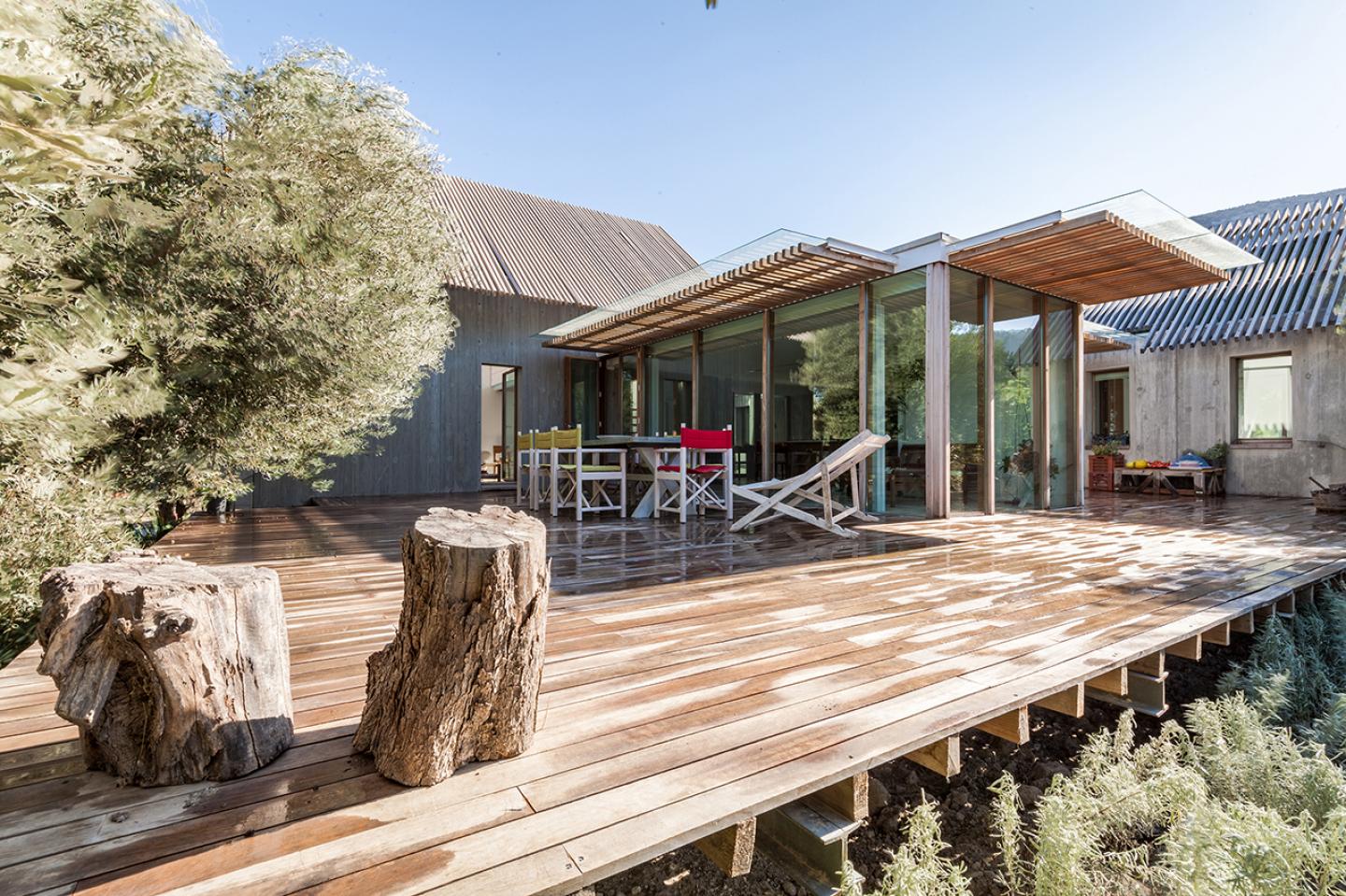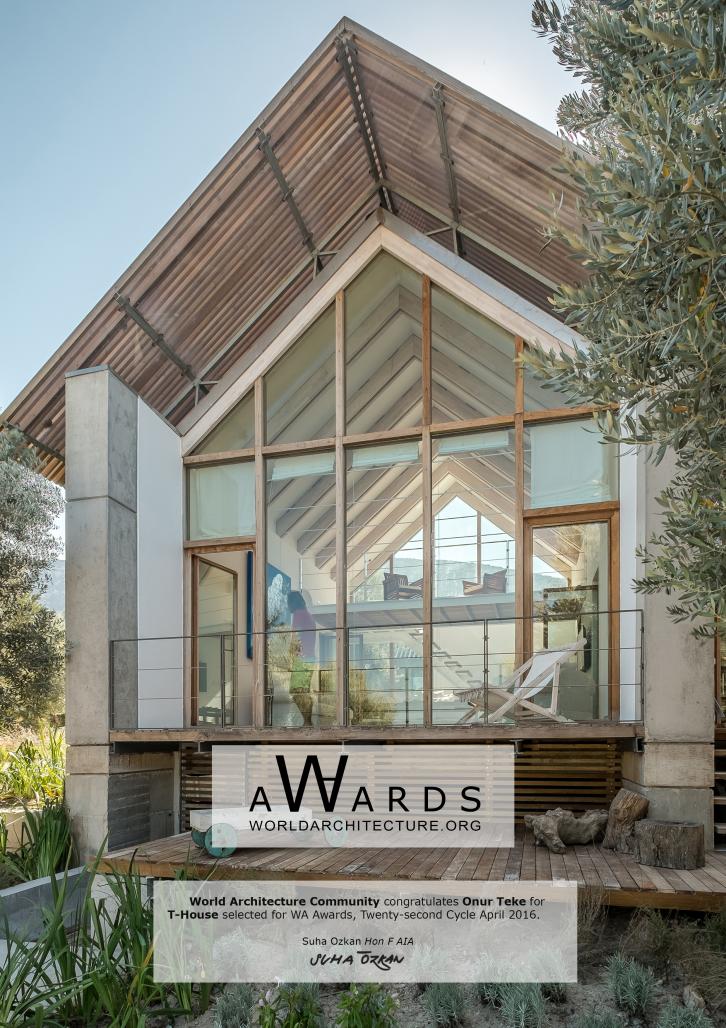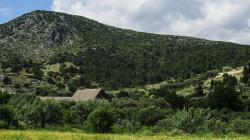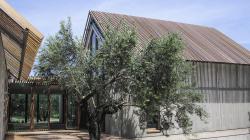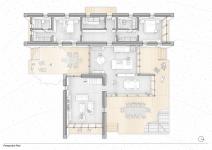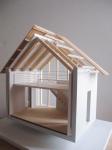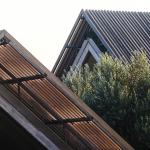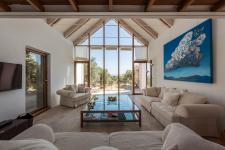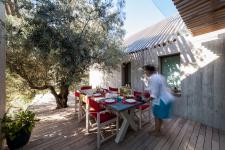The project’s significance rests with its proposal to introduce an “unobtrusive novelty” in a bucolic landscape dotted with what could best be described as generic, uninspired summer homes. It sits within the tight grid of the olive grove and remains barely discernible through the think foliage of trees if it weren’t for its steeply pitched roof—a curious feature, one that leaves a gentle mark on the landscape and invites one to explore further.
The T-House appears at home in nature. The grey of the concrete surfaces and the somber tones of timber components reflect the Mediterranean flora and the geological formations that define the surrounding landscape. The overall form is broken into small volumes so as not to present an imposing mass. Glazed surfaces define permeable openings which extend the interior spaces to the exterior with a delicate wrap-around deck serving as outdoor rooms bordered by olive trees. This effortless connection between the interior and exterior spaces is very much in keeping with the lifestyle of the owners who spend a considerable part of their day in the open air. It is also a conscious (albeit modern and more transparent) reworking of the spatial theme of hayat, which is integral to Turkish vernacular traditions and is reflected here in the plan of the house as a semi-open core for daily chores and routines.
The design of the T-House aims to put no strain on the site. The house is respectful of its surroundings and attuned to the seasonal cycles and daily rise and fall of the sun. The mass of the building is lifted off the ground in order to allow the air to circulate freely underneath, thereby passively cooling the living areas. Glazed openings pierce through the central core to allow cardinal winds to cross-ventilate the interior spaces. The plan offers occupants a choice of two bedrooms, whose exact positioning within the rear concrete shell is decided according to the intensity of the sun during the winter and summer months. The living room rises to a mezzanine level to capture the afternoon sun which sets rather prematurely behind the neighboring hills. The T-House thus enters into a dialogue with the rhythms and elements of the surrounding natural world. Theirs is a dialogue in which no party overpowers the other.
The design and construction process mobilizes local crafts and expertise. The T-House is not manufactured elsewhere and shipped off to its site for assembly. A local carpenter crafted all the woodwork, including the wrap-around deck and the delicate timber formwork which leaves the imprint of the wood grain on the exposed reinforced concrete walls. Similarly, a local contractor was in charge of the construction of the reinforced concrete structure. The project shows the possibility of harnessing local resources and know-how to speak a universal language (both formally and conceptually). It proposes a context-sensitive, yet architecturally daring design in a locale away from the main centers of architectural activity and, particularly, in a building culture dominated by conventional practices. Just as the retired owners pledge their commitment to the daily life of their rural community, so does the T-House strive to be an enduring contribution to the residential culture of a distinct landscape.
2008
2013
Onur Teke (Architect), Huseyin Kocaman (Carpenter), Di Studio (Local Architects), Onur Kutlukaya (Structural Engineer), Anonim Istanbul (Landscape)
T-House by Onur Teke in Turkey won the WA Award Cycle 22. Please find below the WA Award poster for this project.
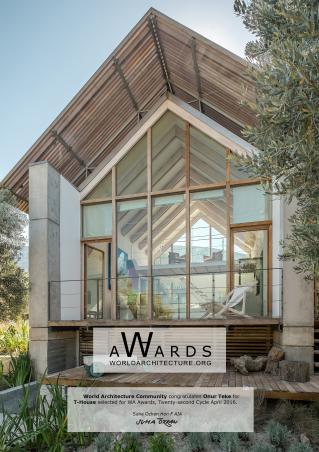
Downloaded 251 times.
Favorited 4 times
